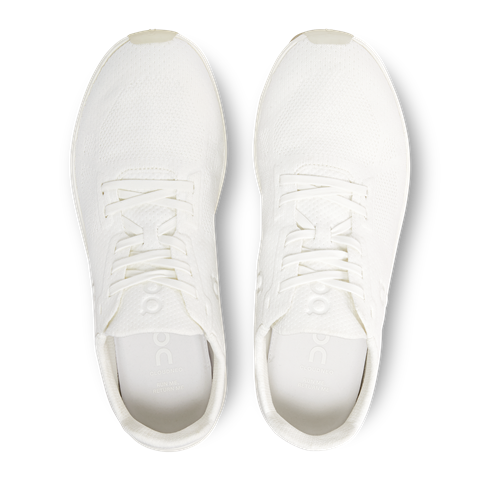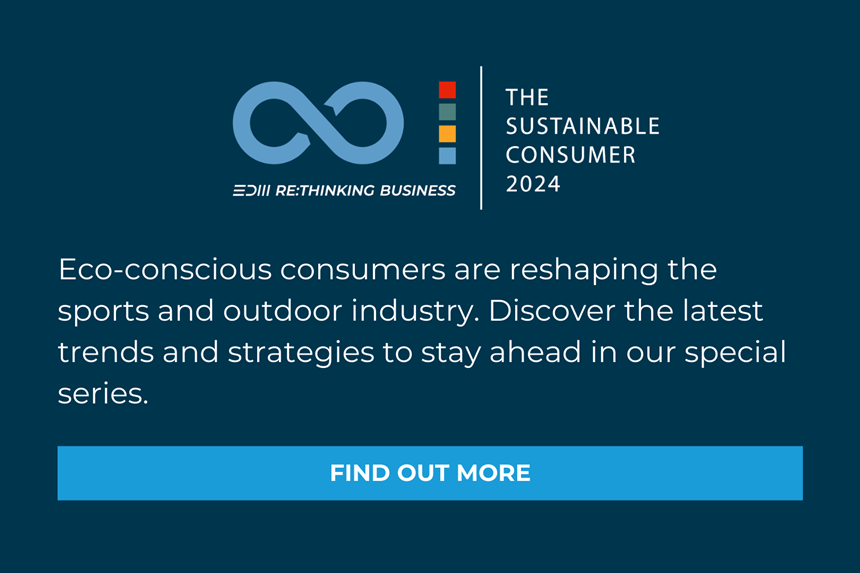Circular economy is a concept that everybody is talking about. We provide an outline, examples at the product and business levels, and dive deeper at a systemic level. And we show you the first steps for your circular business.
The EU is aiming to achieve a fully circular net zero economy by 2050, as it strives to meet the Paris Agreement 1.5°C goal. More and more companies are setting climate goals according to science-based targets, and striving to decouple their business activities from value chain emissions. Circular business model approaches such as rental and resale schemes are on the rise, with the latter market predicted to grow to as much as 40 percent of the overall apparel, footwear, and accessories sector, according to the Boston Consulting Group.
The 2021 UN Global Compact-Accenture CEO Study on Sustainability revealed that nearly 80 percent of CEOs understand that their business models need to transition to more sustainable ones, and many have started implementing circular business models. But there is no one circular economy approach, rather it is an umbrella concept. So, what opportunities does your company have to engage with circularity? In this article we explore some examples of functional circular business models.

Circular economies — retaining product value
Linear production uses our global planetary resources faster than the earth can restore them, and overconsumption accelerates the problem. In contrast, a circular economy approach sees the product as a resource, especially in its most valuable, i.e. functional state, and so, the first step, is often aimed at extending a product’s life; avoiding and reducing waste emissions and pollution.
If material mixes are needed for product performance, the design has to account for easy disassembly in order that the material can flow back into the individual recycling streams, or be fit for biodegradability.
Thought leaders Cradle to Cradle and the Ellen MacArthur Foundation share the goal of extending resource life, and focus on implementation strategies such as reuse, servitization (connecting and adding a service to a product), and designing for longevity and repair. There are also preventive strategies, such as functional replacement (e.g. mobility as service models replace the need for individual car ownership) and dematerialization — using less or no material to deliver the same level of functionality (e.g. by digitizing, or selling a product electronically or virtually). These will be pivotal in the stark reduction of resource dependency and pollution.
Circular Materials — closing the loop
Taking a shoe as an example, using recyclable mono-materials contributes to circularity. The Cloudneo running shoe from On, for example, is made from two fully recyclable polyamides (Pebax and PA11 from castor beans). As such 100 percent of a worn-out Cloudneo can be recycled to make a new Cloudneo. Furthermore, the model is not available for sale but can only be rented, which makes it more likely that the shoe will be returned, recycled, and remade.
The Napapijri Circular Series jackets use recycled and recyclable mono-materials, like the Econyl Regenerated Nylon: A nylon 6 yarn, recycled from discarded fishing nets and other waste materials. Fillings and trimmings are also made of Nylon 6. A take-back program is offered to close the resource loop.

Circular business models – adding social impact
Rental, resale, or sharing services likewise secure product value and reduce negative environmental impacts. They could also theoretically enhance participation/inclusion and become a catalyst for tackling social inequality. In addition to respecting human rights and fairness along the entire value chain, sustainable circular business models provide access to a product or service for people who could not (or do not) want to buy.
An inspiring sustainable, circular business approach that combines social inclusiveness, customer centricity and material circularity is Teemill. It allows everybody to start their own fashion brand as easily as possible by providing an online shop for free. They use a print-on-demand concept to avoid waste through overproduction. The offered clothing is made from organic cotton and manufactured as sustainably as possible (e.g. renewable energy, reducing pollution during dyeing). Furthermore, they offer Remill – the recycling platform for Teemill clothing: Teemill products contain a QR code that enables consumers to send them back for free at the end of life to be recycled into new Teemill products. Such sustainable business models have the potential to closely retain customers and win new ones. Moreover, they create purpose and motivation in employees and convince new ones to join.
In our featured interview with Houdini CEO Eva Karlsson, she speaks about how the transformation from linearity to circularity begins with “acknowledging that you are linear and that linearity is a degenerative, destructive way of working. And then moving further into knowledge and innovation.” For Karlsson, “The nice thing is, that if we go circular in terms of product, there’s still the circularity in terms of use and lifestyle, and then there’s regenerative solutions as the next step.”
From within the sports and outdoor industry, Northern Playground is worth mentioning. The Norwegian-based technical clothing company not only builds its products around longevity, wearability, and a “buying less” multi-purpose philosophy, they are also customer-owned and promote social responsibility. The company has a self-imposed environmental tax: For every sale, they set aside 15 NOK, which since Jan. 2021 has gone towards saving and repairing clothes from other brands. Employees also take their personal impact seriously, including car-free commutes and meat-free lunches. And they work politically to make more space for the environment in the business community.
Vaude’s CSR strategy encompasses a rental model, Rent, acknowledging that ownership is continuing to lose importance. As an additional inclusivity bonus, by renting equipment, individuals can try an outdoor sport first, without having to invest in expensive gear. Vaude also supports the private resale of products on an eBay platform and facilitates the donation of products to FairWertung: An umbrella organization for non-profit and church organizations, which campaigns for greater transparency and accountability in the collection and recycling of used clothing.
Circular ecosystems — big impact and space for innovation
The brands profiled here have managed to close some loops in their value chains. However, many open questions remain for the sports apparel industry: How can we improve the design of, for example, performance textiles, both technically and for circularity? How do we ensure material flow back to recycling facilities? How are we going to create value from diverse textile waste in the future? Such questions affect the entire textile and fashion industry and require innovative answers on a systems level to create circular ecosystems. As Houdini’s Karlsson says: “We weren’t able to solve linearity on our own. Either it wasn’t possible because we needed an overhaul of internal processes, or it wasn’t possible because we couldn’t decide if this or that solution was better. So we had to work with the Stockholm Resilience Center and Planetary Boundaries to understand the impact on the planet.”
Systemic solutions intertwine diverse value chains and a broader stakeholder network, including dialogue with entire regions, regulatory systems, infrastructure and public authorities. Standards are absolutely essential for a working systemic solution and are an extremely effective tool to drive change in the industry and to ensure adherence to a given set of criteria.

One systems solution for the fashion and textile industry is provided by Circular.Fashion through their circularity.ID Open Data Standard, and their Circular Material Library. The latter provides an online platform showcase of sustainable, circular input materials for brands and designers. For finished products, the circularity.ID stores information about all materials, their origin, and manufacturing processes. This is attached as a QR code label within the product, providing information (a) to consumers about how to care for the product to extend its life, and (b) to sorting companies to enable decisions about reselling or required recycling processes through automatic software recognition.
Textile Exchange’s Trackit delivers industry-wide standards and therefore provides systemic support. The idea behind Trackit is to give the industry the option to verify the sustainability claims of a product on three levels: site, transaction, and physical material. Textile Exchange implemented a Chain of Custody including their Content Claim Standard. The requirements in this document form the foundation for their standards.
How to create a sustainable, circular business model
If your company is facing supply chain disruptions, exploding shipping costs, investors demanding transparency about sustainability, or new functional demands from your customers, it is definitely time to think about implementing your own sustainable, circular business model.
- Know your circularity status. What proportion of the products and services that you offer currently include circular approaches (e.g. repairs, rentals, resale, sharing platforms, circularly produced products)?
- Understand your customers. Figure out the functional needs of your customers. Is it owning an outdoor jacket or is it the outdoor experience that the jacket enables?
- Use disruptive thinking. Explore your core competencies as a business and ask yourself: How can we use our company, our brand, or our customer relationships to bring new value to customers, people, and the planet at the same time? Your answers will help to create an overarching vision, and set goals that are rooted in sustainable circularity.
- Experiment with circular business models. Draw your value chain and note in which steps you produce waste (including emissions and pollution). Regard waste as a business opportunity. Is it enough to make individual steps more circular in your value chain or do you need to rethink it entirely? Which circular strategies (repair, renting, sharing, cascading materials, etc.) could you utilize to sustain value as much as possible? Test some ideas with customers.
- Don’t forget to have fun. Involve all employees and learn from your experiments. If you have the feeling that existing value chains, infrastructure, or regulations are not ready for your positive sustainability impact yet, then start the dialogue — you may be on a system innovation journey that creates a circular ecosystem. Enjoy the journey!
About the author
Dr. Diana Born is Partner for Sustainability Strategy at the management consultancy K’UP, a sustainability expert for the Futurewoman Network, and a member of EIT Climate-KIC’s Network of Climate Coaches. As a life scientist, marine conservationist, and system innovator, her passion is to help people, corporations and public organizations down a holistic, sustainability journey that makes our society fit for the future.








